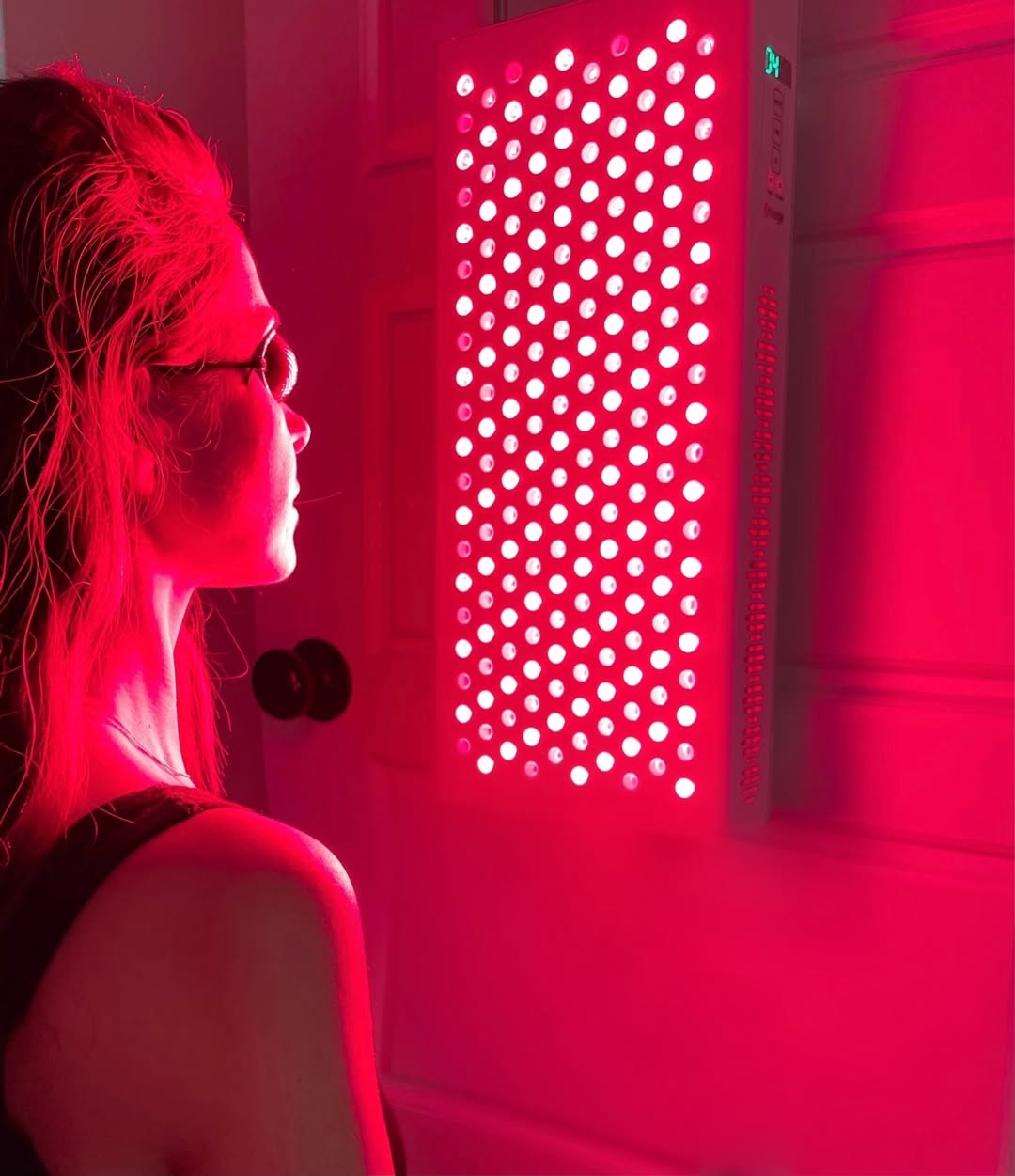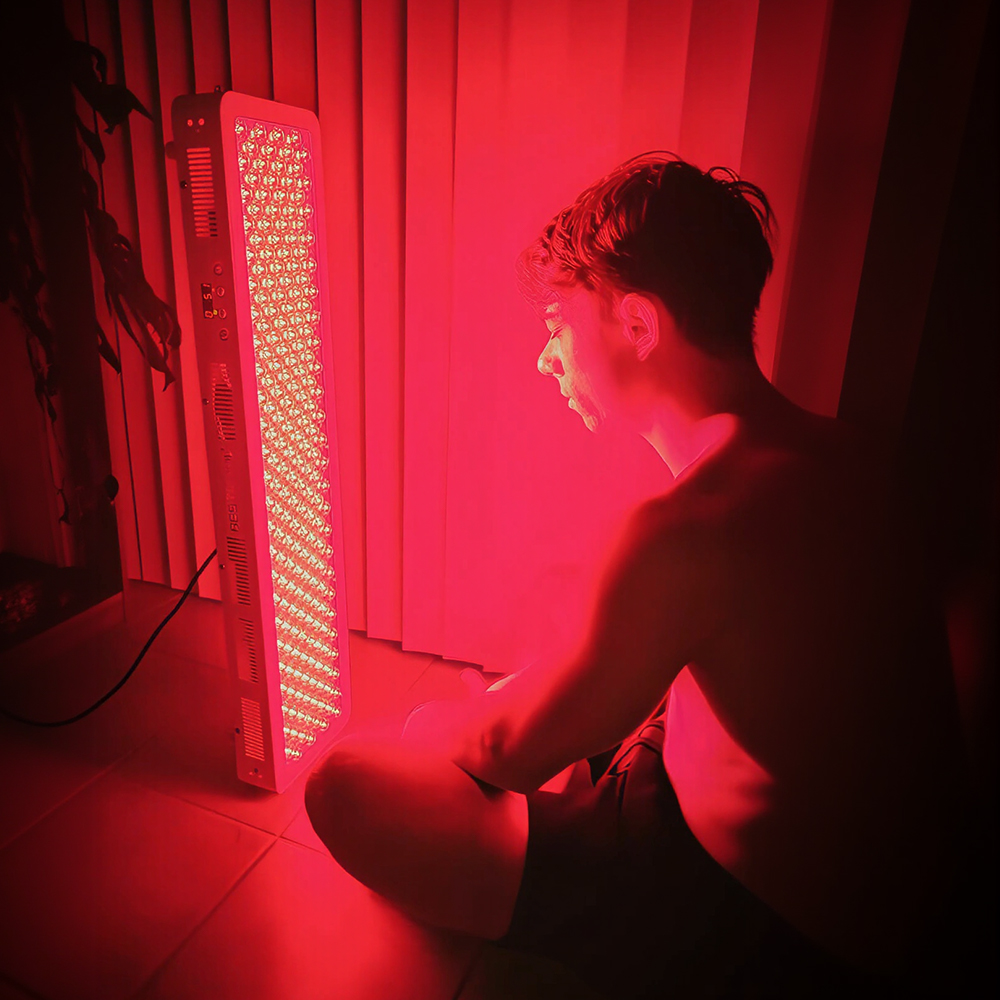![]() Free Shipping
Free Shipping ![]() Buy Now, Pay Later
Buy Now, Pay Later ![]() Eligible
Eligible
Red Light Therapy for Autoimmune Disorders: A Comprehensive Guide

Autoimmune disorders affect millions of people worldwide, causing chronic pain, inflammation, and a host of debilitating symptoms. Conditions like rheumatoid arthritis, lupus, multiple sclerosis, and Hashimoto’s thyroiditis occur when the immune system mistakenly attacks healthy tissues, leading to long-term damage and reduced quality of life.
While traditional treatments such as immunosuppressants, steroids, and anti-inflammatory drugs can help manage symptoms, they often come with significant side effects. This has led many patients and researchers to explore alternative therapies—one of the most promising being red light therapy (RLT).
But what exactly is red light therapy, and how can it benefit those with autoimmune diseases? In this in-depth guide, we’ll explore:
- The science behind red light therapy
- How it interacts with the immune system
- Clinical evidence supporting its use for autoimmune conditions
- Practical ways to incorporate RLT into your treatment plan
By the end, you’ll have a clear understanding of whether red light therapy could be a viable option for managing your autoimmune symptoms.
What Is Red Light Therapy?
Red light therapy, also known as low-level laser therapy (LLLT) or photobiomodulation (PBM), involves exposing the body to specific wavelengths of red and near-infrared (NIR) light. These wavelengths penetrate the skin and are absorbed by cells, stimulating mitochondrial function—the powerhouse of the cell—leading to enhanced energy production and cellular repair.
How Does It Work?
The primary mechanism behind red light therapy is its ability to boost adenosine triphosphate (ATP) production—the molecule responsible for storing and transferring energy in cells. When cells have more ATP, they function more efficiently, leading to:
- Reduced inflammation
- Faster tissue repair
- Improved circulation
- Enhanced immune modulation
Unlike ultraviolet (UV) light, which can damage skin cells, red and near-infrared light are safe and non-invasive, making them ideal for long-term use.
VELLGUS Elite V2
THE #1 RATED RED LIGHT DEVICE
VELLGUS pro V2
THE #1 RATED FULL BODY RED LIGHT DEVICE
The Connection Between Red Light Therapy and Autoimmune Disorders
Autoimmune diseases are characterized by chronic inflammation and immune system dysregulation. Red light therapy has shown promise in addressing these issues through several key mechanisms:
1. Reducing Inflammation
Inflammation is a hallmark of autoimmune disorders. When the immune system attacks healthy tissues, it triggers an inflammatory response that leads to pain, swelling, and tissue damage.
How RLT Helps:
- Decreases pro-inflammatory cytokines (such as TNF-α, IL-6)
- Increases anti-inflammatory cytokines (such as IL-10)
- Suppresses oxidative stress, a major contributor to inflammation
A 2014 study published in Lasers in Medical Science found that red light therapy significantly reduced inflammation in patients with rheumatoid arthritis, leading to decreased joint pain and improved mobility.
2. Modulating the Immune System
One of the most exciting aspects of RLT is its ability to balance the immune response rather than suppress it entirely (unlike immunosuppressant drugs).
How RLT Helps:
- Promotes regulatory T-cell (Treg) activity, which helps prevent excessive immune responses
- Enhances mitochondrial function in immune cells, improving their efficiency
- Reduces autoimmune antibody production in conditions like lupus
A 2020 study in Scientific Reports demonstrated that near-infrared light therapy helped restore immune balance in mice with autoimmune encephalomyelitis (a model for multiple sclerosis), suggesting potential benefits for humans.
3. Promoting Tissue Repair and Pain Relief
Many autoimmune disorders cause tissue damage—such as joint erosion in rheumatoid arthritis or nerve degradation in multiple sclerosis.
How RLT Helps:
- Stimulates collagen production, aiding in tissue regeneration
- Accelerates wound healing by increasing fibroblast activity
- Reduces neuropathic pain by calming overactive nerves
A 2017 study in The Journal of Rheumatology found that rheumatoid arthritis patients who used red light therapy experienced significant reductions in pain and morning stiffness compared to a control group.
Clinical Evidence: Red Light Therapy for Specific Autoimmune Conditions
Let’s take a closer look at how red light therapy has been studied for some of the most common autoimmune disorders.
1. Rheumatoid Arthritis (RA)
RA is an autoimmune disease that attacks the joints, causing pain, swelling, and eventual deformity.
What Research Shows:
- A 2013 study in PLOS ONE found that RA patients treated with red light therapy had reduced joint swelling and pain after just four weeks.
- Another study in Lasers in Surgery and Medicine reported improved hand grip strength and reduced inflammation markers in RA patients.
2. Lupus (SLE)
Systemic lupus erythematosus (SLE) affects multiple organs, including the skin, kidneys, and joints.
What Research Shows:
- A 2019 animal study in Lupus Science & Medicine found that red light therapy reduced kidney inflammation in lupus-prone mice.
- While human studies are limited, anecdotal reports suggest RLT may help with skin lesions and fatigue in lupus patients.
3. Multiple Sclerosis (MS)
MS occurs when the immune system attacks the protective myelin sheath around nerves, leading to neurological symptoms.
What Research Shows:
- A 2021 study in Multiple Sclerosis and Related Disorders found that near-infrared light therapy improved motor function and reduced fatigue in MS patients.
- Another study suggested RLT may help remyelinate nerves, potentially slowing disease progression.
4. Hashimoto’s Thyroiditis
Hashimoto’s is an autoimmune condition where the immune system attacks the thyroid gland, leading to hypothyroidism.
What Research Shows:
- While direct studies on Hashimoto’s are limited, RLT has been shown to reduce thyroid antibodies in some patients.
- Many users report improved energy, reduced brain fog, and stabilized thyroid function with consistent use.
How to Use Red Light Therapy for Autoimmune Disorders
If you’re considering red light therapy, here’s how to get started:
1. Choosing the Right Device
- Wavelength: Look for devices emitting 660nm (red) and 850nm (near-infrared) for deep tissue penetration.
- Power Density: Higher power (measured in mW/cm²) means shorter treatment times.
- FDA-Cleared Devices: Brands like Joovv, Mito Red Light, and Rouge offer high-quality options.
2. Treatment Protocol
- Frequency: 3-5 sessions per week for chronic conditions.
- Duration: 10-20 minutes per area.
- Distance: 6-12 inches from the skin for optimal penetration.
3. Combining with Other Therapies
For best results, pair RLT with:
- Anti-inflammatory diets (Paleo, AIP)
- Supplements (Vitamin D, Omega-3s, Turmeric)
- Lifestyle changes (stress management, exercise)
Potential Side Effects and Precautions
Red light therapy is generally safe, but some considerations include:
- Eye protection (especially with high-powered NIR devices)
- Possible temporary fatigue (due to detoxification)
- Skin sensitivity (rare, but possible in photosensitive conditions like lupus)
Always consult your doctor before starting RLT, especially if you’re on immunosuppressants.
Conclusion: Is Red Light Therapy Worth Trying?
Given its anti-inflammatory, immune-modulating, and tissue-repairing benefits, red light therapy holds tremendous promise for autoimmune disorders. While more large-scale human studies are needed, the existing evidence—coupled with countless patient testimonials—suggests it’s a safe, non-invasive, and effective adjunct therapy.
If you’re struggling with autoimmune symptoms and seeking alternatives to harsh medications, red light therapy may be worth exploring. Start with a high-quality device, follow a consistent protocol, and monitor your body’s response.
Have you tried red light therapy for an autoimmune condition? Share your experiences in the comments below!








